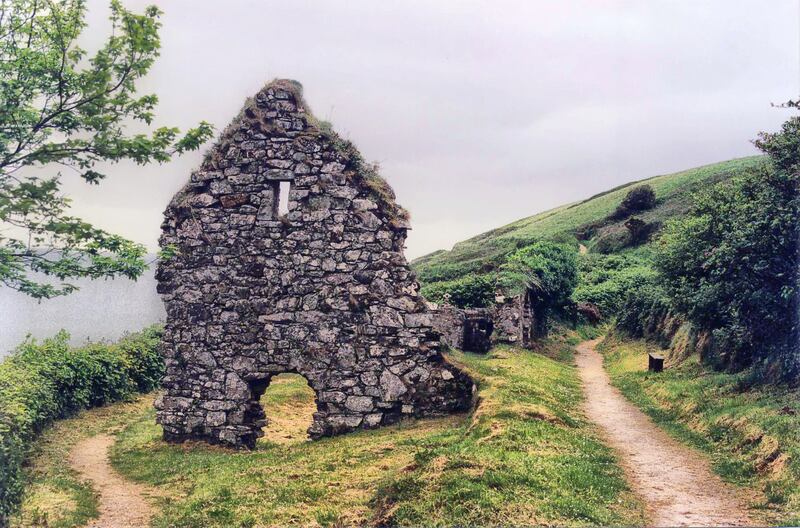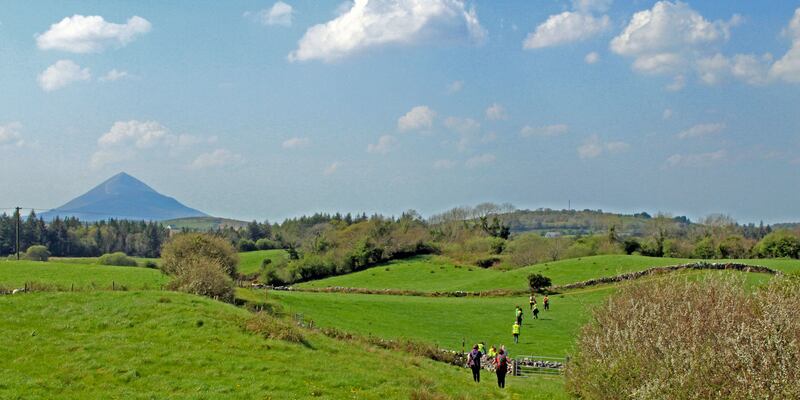It is sometimes said that the past never completely dies but, like Banquo’s Ghost, comes to revisit us. Recent decades have certainly been notable for a movement towards heeding, once again, the ancient call of a long walk to some mystical place of sanctity.
Why should this be the case? Is it that pilgrimage somehow serves as a metaphor for life’s bewildering voyage? Do our lives take on more meaning when viewed through the 20/20 prism of a reflective journey? Certainly, a characteristic of most ages has been a compulsion to seek deeper meaning by travelling to some sacred place, vested by generations past with redemptive powers.
Modern transport means that walking to these places is no longer necessary. Yet hosts of otherwise staunchly pragmatic people, many with little formal religious affiliation, have been doing just that. This has come with a shift in motivation for undertaking a pilgrim journey.
To gain grace and indulgences for self or others was the motivation in past times; today, pilgrim walks are undertaken for more personal, holistic and cultural reasons. The journey has become the objective, with the sought-after personal renewal coming not so much from the endpoint as from the long walk itself.

As the modern expression of spirituality becomes more informal and individual, pilgrimage is now as much a journey of the spirit as a physical journey. Allowing individuals time to step away from the pressures of the 21st-century world provides an opportunity to slow down while reflecting on the meaning and purpose of life.
The exponential growth of walking on the Camino of St James has certainly been the 21st-century phenomenon of European tourism. Seeking meaning beyond materialism, the numbers completing this mystical Spanish trail have risen from fewer than 100 in 1967 to almost 450,000 in 2023.
A win-win for Spanish tourism, the Camino has attracted spending away from the overcrowded Costas while bringing low-impact tourism to the Spanish northwest. Until recently, however, almost none of those attracted by the allure of a pilgrim walk to Santiago would have considered Ireland an alternate destination, mainly because this country was commonly believed to lack penitential trails.
On the contrary, Ireland has many mystical paths and a vibrant pilgrim tradition, with all major routes long predating the Camino. In medieval times, when religion was less formalised, pilgrimage was an important devotional expression, with penitents journeying to Glendalough, Co Wicklow; Skellig Michael, Co Kerry; Gougane Barra, Co Cork; Croagh Patrick, Co Mayo; and Mount Brandon, also in Co Cork. Lough Derg in Co Donegal was, and still is, one of Europe’s foremost pilgrim destinations.
By the 20th century, however, the emphasis on formal in-church worship meant Ireland’s interest in the Irish pilgrim paths quickly evaporated and they became overgrown and forgotten.
The first stirring in Ireland’s modern pilgrim era came with the appointment of Fr Frank Fahey to Ballintubber Abbey, Co Mayo, in 1986. With the enthusiasm and energy for which he was legendary, Fr Frank immediately set about restoring the ancient Tóchar Phádraig from Ballintubber to Croagh Patrick. Landowners along the trail gave consent and the route was reopened in 1988.
The revival continued a decade later when the Heritage Council set up the Pilgrim Paths Project. With support from local communities, it facilitated the reopening of seven Irish pilgrim paths to celebrate the new millennium.
Footing these ageless paths not only offers the opportunity for spiritual renewal, it also provides a link to the past while contributing to sustainable tourism and community growth
The next milestone in the resurgence was the foundation in 2013 of Pilgrim Paths Ireland (PPI). An umbrella body for the voluntary groups involved with promoting Ireland’s main spirituality-based trails, its objective was to generate increased pilgrim footfall, while maximising visitor spending within rural communities. In this, PPI was successful, with initiatives such as Pilgrim Paths Week each Easter and the Irish Pilgrim Journey in June.
Another PPI initiative is the Irish pilgrim passport, offering an opportunity to explore five waymarked penitential routes through some of the most captivating scenery in counties Cork, Kerry, Wicklow and Mayo. Those undertaking the passport journey must produce evidence of having completed 120km of Ireland’s spiritual trails and obtain the required stamps en route.

In 2016 international recognition was given to the Irish pilgrim paths by the Cathedral of Santiago when it agreed to count a penitential trail walked in Ireland before arriving in Spain. The certificate for completing 25km on an Irish pilgrim path could now be taken to the Spanish city of A Coruña. Here, it could be combined with a 75km walk to Santiago as an entitlement for the full Camino Compostela (Completion Certificate) from the Santiago Pilgrim Office.
The final initiative was the reopening of St Declan’s Way in 2021. Following the journey taken by St Declan to meet St Patrick on the Rock of Cashel, the route links Cashel, Co Tipperary, with Ardmore in Co Waterford while incorporating several medieval pilgrimage routes such as the Rian Bó Phádraig, Bóthar na Naomh and St Declan’s Road. This means Ireland now has an ancient pilgrim trail comparable in length with what most pilgrims undertake on the Spanish Camino.
Ireland’s ancient pilgrim paths are now open, fully waymarked and very much in step with the changing demands of present-day recreation. Post Covid, people are not only walking in much greater numbers but are also seeking more interaction with green and contemplative spaces.
Irish people searching for this elusive butterfly of fulfilment and self-awareness need no longer head for Spain. Instead, they can remain in Ireland and sample almost 300km of fully waymarked and approved pilgrim trails that follow the steps of pilgrims past. Footing these ageless paths not only offers the opportunity for spiritual renewal, it also provides a link to the past while contributing to sustainable tourism and community growth.
The past decade has seen pilgrim walkers returning in increasing numbers to Ireland’s spiritual trails, with local community development group Knockmealdown Active having an average of more than 200 participants on its organised walks along St Declan’s Way. Notwithstanding such valiant efforts by volunteers to build footfall, the Irish paths are still relatively unknown abroad.
Despite Ireland’s international reputation for spirituality reaching back to the pre-Christian mists of Celticism, our ancient trails have never really been marketed overseas. This is a missed opportunity since they present a unique opportunity to attract spending by discerning overseas visitors to areas less frequented by tourists.
Relatively modest investment is now required to build global awareness of Ireland’s mystical trails and to provide the necessary infrastructure to support the paths. Looking ahead to our new world, it may be that it is from the past we will find the answers for the future.
Further information on walking the Irish pilgrim paths is available at pilgrimpath.ie
John G O’Dwyer’s guidebook to the Irish Pilgrim Paths is available from bookshops nationwide and gillbooks.ie
Holy wells
In the popular TG4 series Ag Trial ar Tobar, Manchán Magan took a deep dive into the myths, legends and cures associated with Ireland’s dense network of holy wells. The show tells us how water has traditionally been regarded as a source of renewal and healing and so, unsurprisingly, holy wells exist at many Irish places of pilgrimage.
Beautifully situated on a cliff top near Ardmore, Co Waterford, St Declan’s hermitage and holy well is where the saint reputedly performed many baptisms before retiring there to pray during his latter years. The site remains a place of pilgrimage, particularly on July 24th, the feast of St Declan.
St Fursey’s holy well is situated at the start point for the pilgrim path on Cnoc na dTobar mountain in Co Kerry and is said to offer a cure for blindness. On the Wexford/Pembrokeshire pilgrim path near Oylegate is a holy well reputed to have been blessed by St David of Wales on an Irish visit. Tradition holds that water from the well contains curative properties, especially for warts.
Finally, St Patrick’s Well at Ballintubber Abbey, Co Mayo, is at the trailhead of the Tóchar Phádraig. The saint baptised converts here, with a stone alongside bearing the supposed imprint of his knee.
The Irish language
Echoes from the Irish language are inescapable on Ireland’s pilgrim paths. In southwest Kerry we have the Cnoc na dTobar (The Mountain of Wells) pilgrim path. On the Dingle Peninsula we find Cosán na Naomh (The Saint’s Path), which begins from Ceann Trá (Head of the Beach) but is anglicised to Ventry. In Mayo the ancient Tóchar Phádraig (Patrick’s Causeway) leads to Croagh Patrick (Patrick’s Stack) having passed by the monastic site at Aughagower (Field of the Spring). On the Tóchar path, we encounter Loch na gCeann (Lake of the Heads) where legendary priest hunter Séan na Sagart (John of the priests) reputedly deposited the decapitated heads of his clerical victims during penal times.
Irish is a highly descriptive language and sometimes informs us about a place through its Gaelic name. On St Declan’s Way we get Cahir, which doesn’t tell us much about the town until we look at its Irish name to learn: Cathair Dún Iascaigh (Town of the Fort of the Fishery). Also, on Declan’s Way, we encounter the Rian Bó Phádraig (Track of St Patrick’s Cow), reputedly created by an angry bovine owned by the saint as she pursued a stolen calf across the mountains.















